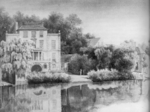Thames Young Mariners
Ham, LondonNature centres in EnglandSport in the London Borough of Richmond upon ThamesUse British English from April 2016

Thames Young Mariners is a 25-acre area of land situated in Ham. It includes the Thames Young Mariners Base Lagoon, which is a calm 10-acre lake connected to the River Thames by a lock. The site was established over 40 years ago and sits in between Richmond and Kingston. Thames Young Mariners is surrounded by Ham Lands, which is a Local Nature Reserve of approximately 200 acres. Ham Lands is home to an array of wildlife across its various areas of woodland, scrub, grassland, and wetland, and also features one of Britain’s most well-preserved heaths.
Excerpt from the Wikipedia article Thames Young Mariners (License: CC BY-SA 3.0, Authors, Images).Thames Young Mariners
Riverside Drive, London Ham (London Borough of Richmond upon Thames)
Geographical coordinates (GPS) Address Nearby Places Show on map
Geographical coordinates (GPS)
| Latitude | Longitude |
|---|---|
| N 51.4379888 ° | E -0.3273206 ° |
Address
Riverside Drive
TW10 7RP London, Ham (London Borough of Richmond upon Thames)
England, United Kingdom
Open on Google Maps









